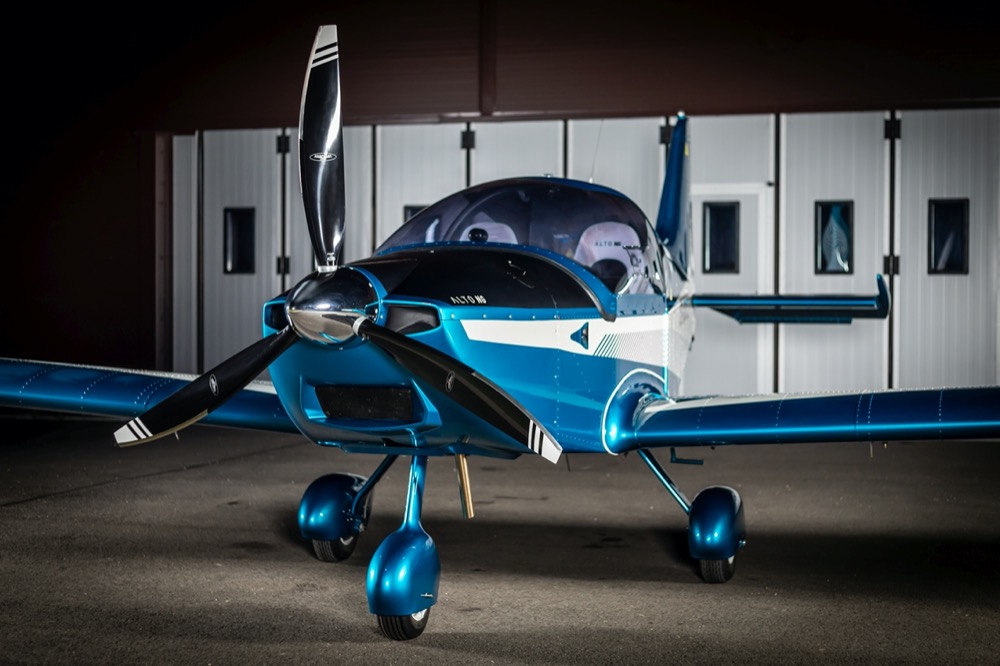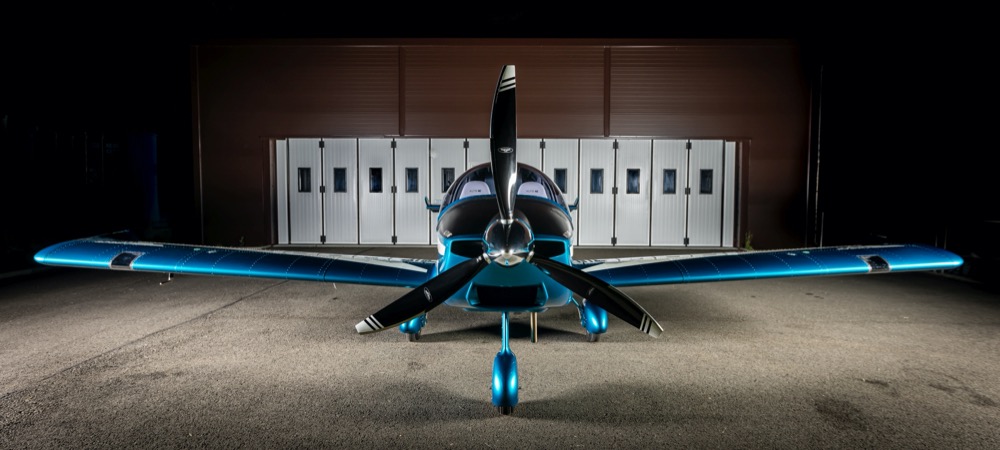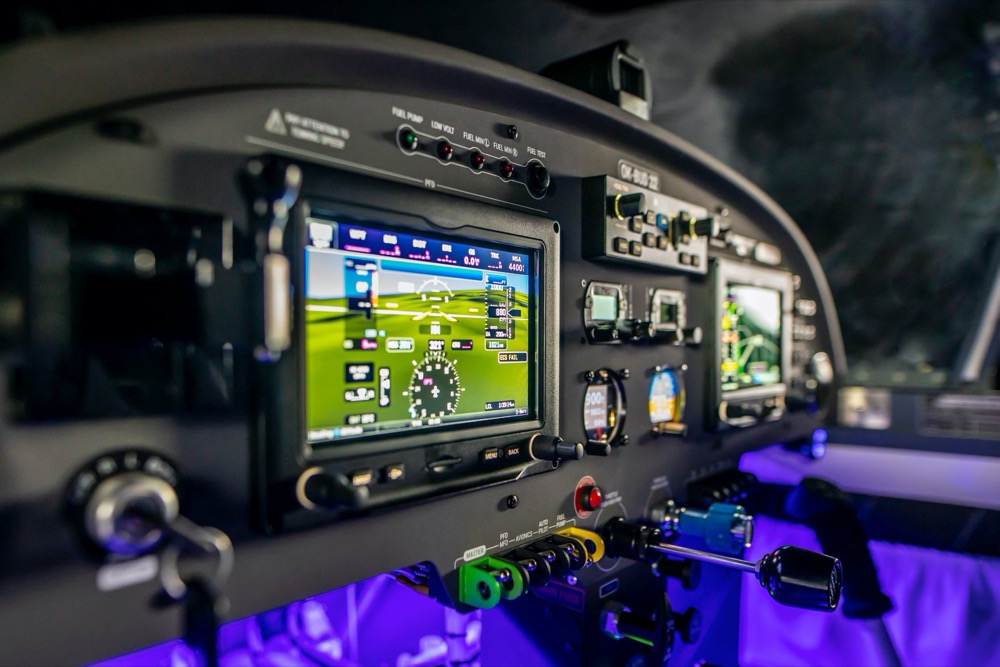Introducing the all new Alto NG. Engineered by Czech company Direct fly, this UL-2 MTOW 1320 Lbs Alto NG is the result of more than fifteen years of experience with production and operation of previous Alto aircraft. The Alto NG offers great flight qualities and stalling characteristics known to the previous Alto model, and includes many improvements and modernizations. The Alto NG complies with the latest FAA LSA standards.
This is the new Alto NG.

If you’re familiar with the previous model, you will notice immediately the longer engine cowling. The Alto NG has a more elegant look with smoother transition between the fuselage and cabin. More important, this change allowed the engine to move forward. This update addresses feedback from the previous model and allows use of the full capacity of the baggage compartment, 33 pounds.
New engine installations
The new aircraft introduces a better solution to engine and oil cooling as well as to cabin heating and engine overcooling in winter months. All of this is due to the new shape of the engine cover and its inner structure – carburetors, air intake, and cylinder baffle. A new airbox better stabilizes the air between both carburetors compared to the previous model, which helps the engine run more calm. The ram air inflow provides enough air for the engine. In cooperation with water and oil thermostat, and the choice between three sizes of oil coolants, the engine is neither overheated during climb nor overcooled during descent.

Reinforced Alto
Based on our experience with periodic check-ups and service, we came up with a new attachment of the newly reinforced front leg in the engine bulkhead with rivets of greater load capacity. We also stiffened shoulder strap fixings inside the cabin.
Even though the wing looks the same at first glance, it has been reinforced and changes have been made in construction and simplification in production. Small collisions that complicated flaps installation have been removed as well. A new pitot tube location has been established and airspeed meter calibration has been tested in flight with Garmin and Dynon probes.


On the fuselage, in the upper part of the skin and under the windows, new longerons were added to increase the stability of the skin. Czech certification calculations showed the need to increase the VD speed from 270 km/h to 295 km/h. In relation to that the control stiffness had to be increased and the center of gravity of the elevator had to be moved closer to the rotation axis. This was achieved by elevator tips mass balance, which also contributed to reduction of control stick force during taxiing, better force response during maneuvers and better trim ability in various landing configurations.
Flight control change
With the new Alto NG, control stiffness has been increased by flight control concept change, from control stick to control surface. Cables for pitch control have been replaced by a system of pull rods, levers and rockers, which brought faster and more precise aircraft control with quick response to the pilot. There is also no need for turnbuckles wiring and ropes tightening. The cables remained used only for rudder control. This change meant a long list of construction adjustments – stiffening, rocking arm holders, inspection holes etc., which are visible from the lower side of the fuselage, mainly under the baggage compartment. The whole control system is connected by fitted bolts with cotter pins.


Secondary system of pitch trim control
Another important change was adding a second trim tab on the horizontal tail surface. According to the new regulations, the aircraft needs to be trimmable in a certain range of speeds in given configuration in the worst possible centre of gravity position. In reality that means that it is necessary to fulfill the 1.1 times stalling speed with fully extended flaps with maximal forward center of gravity. Our solution was to develop our own flap controller, which controls the second trim tab (on the right side of horizontal stabilizer) at the same time. Increasing flap deflection, deflects the second trim tab and decreases the control force for pilot. This force never really goes away, so that the pilot knows about the simultaneous change of flaps deflection and wing pitching moment. However, the pilot can control the trim on the left side of horizontal stabilizer by himself the whole time and can trim as required. For full aircraft trimming in longitudinal direction a second trim tab on the right side of is used, which is controlled from the cockpit.
New possibilities
Beside the construction changes, the Alto NG also brings wider selection of accessories and additional equipment. There is a new option to choose an in-flight adjustable hydraulic propeller. With this type of propeller, the aircraft has great flight performance, both in climb and in cruise. This will be appreciated mainly by those who occasionally use Alto as a towing aircraft. In comparison to the electric propeller, the hydraulic one has a perfect and almost immediate control over the propeller regime.
In the interior, there are new seats with headrests available. We also adjusted the ergonomics of pedals and control sticks. In addition to standard headset holders behind pilots’ heads, connector sockets have been placed in between passengers. Lemo connectors are available as well.

In the interior, we’ve added a new flap controller and a fuel valve with START button, where it’s mechanically impossible to start the engine with closed fuel valve. There is no need to think from which tank it is necessary to pump the fuel first when both tanks are full. It is now possible to pump from whichever tank the pilot chooses because the unused fuel returns to the tank they’re pumping from.
Even with the new model we did not stop designing instrument panels for each customer specifically, based on their preferences and wishes. Thanks to many years of experience we are able to suggest the right choice and combination based on the customer’s budget.

Alto NG in the most luxurious and complex specification can be produced with an empty weight of 785 pounds. Alto NG with fixed propeller, basic flight and engine instruments and without the parachute rescue system can be produced with an empty weight of 700 pounds.
